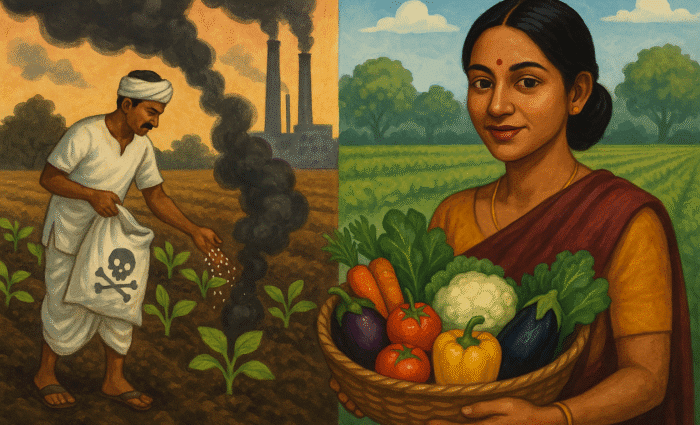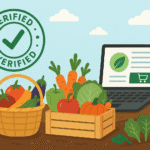Fertilizers have long been seen as the backbone of modern agriculture. They boost productivity, increase yields, and ensure food availability for India’s growing population. But beneath this apparent success lies a darker truth: the hidden costs of fertilizers that affect not just farmers, but every Indian consumer.
From soil degradation to rising health issues, the overuse of fertilizers has created an unsustainable cycle that harms people, the environment, and the economy. Here’s why Indian consumers must rethink their food choices and switch to chemical-free, toxin-free food.
1. The Impact of Fertilizers on Health
One of the most significant hidden costs of chemical fertilizers is their effect on human health. Excessive use of nitrogen, phosphates, and pesticides in farming leads to residues in the food we consume.
- Health risks for consumers: Fertilizer residues have been linked to cancer, kidney failure, liver damage, and hormonal imbalances.
- Impact on children: Growing kids are particularly vulnerable, as toxins can affect their immunity and growth.
- The rising medical cost: Families end up spending far more on medical treatments than they save on buying cheap, chemically grown food.
In short, the affordability of chemically grown vegetables comes at the cost of long-term health.
2. Fertilizers and Environmental Damage
- Fertilizers don’t just stay in the soil—they leach into water bodies and pollute the environment.
- Soil degradation: Fertilizers strip the soil of its natural fertility, reducing its ability to sustain crops over time.
- Water contamination: Fertilizer runoff leads to nitrate pollution in rivers and groundwater, causing waterborne diseases.
- Loss of biodiversity: Excessive chemicals destroy beneficial soil microbes, earthworms, and pollinators like bees.
This ecological imbalance threatens India’s future food security.
3. The Burden on Farmers
While fertilizers were introduced as a way to increase productivity, farmers today are caught in a cycle of dependency.
- Rising costs: Fertilizers are expensive, and subsidies are shrinking, pushing farmers into debt.
- Yield plateau: Over time, soil fertility declines, and even high fertilizer use does not increase yields.
- Debt trap: Many farmers borrow money to purchase fertilizers, only to face losses when yields disappoint.
Consumers often don’t realize that their demand for cheap food fuels this unsustainable cycle.
4. The Real Cost of Cheap Food
On the surface, chemically grown food is cheaper. But when you consider the hidden costs—healthcare expenses, environmental damage, and farmer distress—the picture changes.
- Healthcare burden: Lifestyle diseases linked to food toxins are on the rise in India.
- Economic impact: Billions are spent by the government in healthcare subsidies for diseases linked to poor diets.
- Generational loss: Degraded soil and polluted water affect the livelihoods of future farmers.
Thus, every rupee saved on chemical-based vegetables today translates into higher hidden costs tomorrow.
5. Why Consumers Must Choose Chemical-Free Food
The solution lies in making conscious choices. By supporting chemical-free and organic produce, consumers can break this harmful cycle.
- Better health: Toxin-free food reduces the risk of chronic diseases and builds immunity.
- Support for farmers: Choosing organic products ensures farmers are encouraged to adopt natural farming methods.
- Environmental benefits: Organic farming restores soil health, conserves water, and promotes biodiversity.
- True savings: While prices may be slightly higher, consumers save on long-term healthcare costs.
6. How Bharat Farm Connect is Leading the Way
Platforms like Bharat Farm Connect are making it easier for families to access chemical-free, farm-fresh produce.
- Direct market linkages ensure farmers get fair prices.
- Consumers receive verified, toxin-free food straight from the source.
- Transparency in sourcing builds trust and promotes healthier communities.
By choosing such platforms, consumers can actively drive change in India’s food ecosystem.
Conclusion
The hidden cost of fertilizers is too big to ignore. What seems like affordable food actually damages health, burdens farmers, and destroys the environment. The only sustainable path forward is for Indian consumers to choose chemical-free, toxin-free food.
By making this switch, you’re not just protecting your health—you’re investing in a better future for your family, farmers, and the planet.






